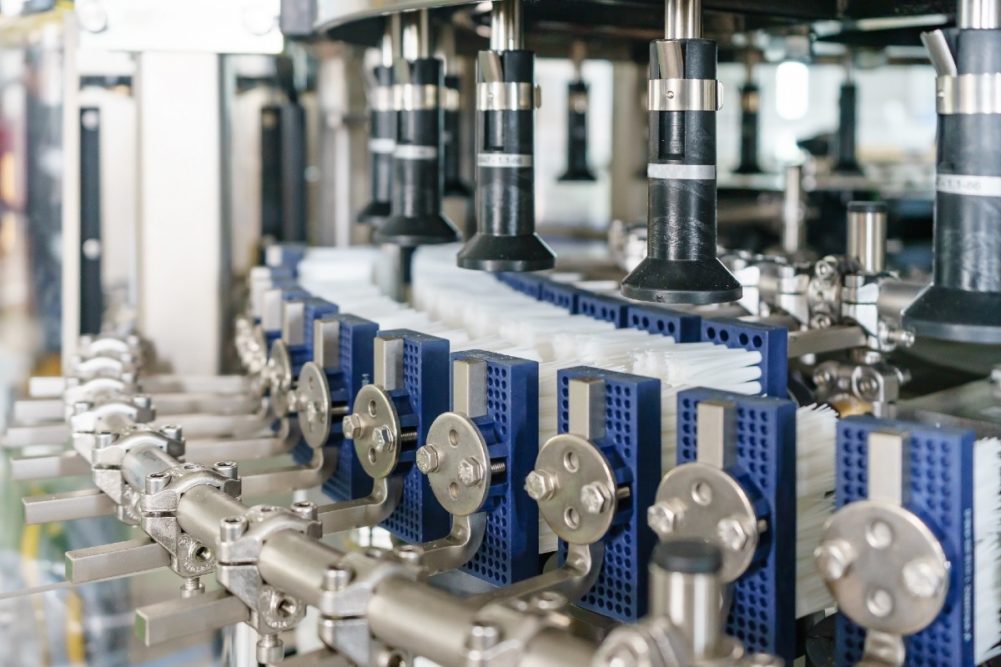CHICAGO — Everybody heard the anecdotal stories about the huge increase in demand for packaging equipment during the pandemic. But PMMI, The Association for Packaging and Processing Technologies, recently released a survey that documented how sales grew 40% between 2019 and 2022.
“It’s just unbelievable,” Jorge Izquierdo, vice president of market development for PMMI, said during PACK EXPO International. “It’s a record in our industry.”
In summarizing the 2022 report on “The Future of Automation of Packaging and Processing,” Izquierdo also pointed out that workplace issues, including widespread skilled labor shortages, will fuel a robust need for packaging equipment in the near future.
“During the first part of COVID, we saw a significant growth in primary packaging,” he said, as many bakery and other food suppliers shifted from foodservice into the retail market. “In the second part, which is driven more by workforce issues, we’ve seen more growth in secondary packaging.”
Here’s why: During COVID, he said, food companies automated primary packaging because of food safety issues and because customers demanded everything be individually wrapped. As that concern unwound, the major issue became the exponential need for labor-saving solutions that impacted secondary packaging, such as case-packing products.
“When you talk about secondary packaging, a lot of that is still done manually, especially when it comes to case packing and palletizing,” Izquierdo told Baking & Snack magazine after his presentation. “When you are trying to address workforce challenges, those are good areas to address.”
While the market jumped 40% between 2019 and 2022, he said 2021 was “a great year,” with packaging equipment rising 11.2%, and equipment sales expected to grow 9.4% in 2022. Looking forward, the market is projected to expand 7.2% in 2023, 4.9% in 2024 and to stabilize around that range going forward. Izquierdo noted that suppliers “have been quite busy for the last three years.”
In the executive summary of the report, PMMI pointed out that labor shortages are driving consumer packaged goods (CPG) companies to adopt automated solutions, although there are obstacles to overcome. For example, installing automated machinery in unsuitable building layouts can be a challenge, as can the lack of skilled labor to operate and maintain sophisticated machinery.
Additionally, CPGs listed automation of the production and processing phase as the top priority as improvements in efficiency and productivity are immediately visible.
“However, there is plenty of scope — and good reason — to automate warehousing, too,” the report stated. “E-commerce is currently impacting the processes of nearly half of CPGs, and it’s fueling the automation trend. As it drives companies toward more responsive modes of distribution such as direct to consumer, it pushes the need for automated solutions and has the side effect of disrupting traditional highly manual warehousing formats, in some cases potentially making warehousing unnecessary. Ever-changing customer demand means flexibility on the production line is key. CPGs are looking to OEMs to come up with new technologies that enable this flexibility.”
The report also outlined how the shortage of skilled labor on production lines is becoming a greater challenge as automated machinery becomes more sophisticated.
“CPGs are looking to OEMs to rise to the challenge of producing machines which are capable of complex operations, while themselves being easy to operate and maintain,” the report said. “The use of 3D printers to produce spare parts for automated equipment has rapidly become a reality, and use of this new but fast-developing technology is particularly attractive because it has a positive impact on the ROI for machinery as parts can be produced more cheaply. Perhaps, more importantly, it circumvents supply chain disruptions and cuts lead times.”
Izquierdo also mentioned that those who were surveyed by PMMI shared that predictive maintenance is becoming increasingly adopted on production lines to avoid costly downtime.
“Though there are outstanding issues regarding cyber-security, OEMs are taking an increasing role, by overseeing predictive maintenance through remote access,” the report noted. “Larger payload cobots are often seen as the solution to the demand for flexibility on the production line. Though cobots were previously considered too small and slow for effective operation in many scenarios, new, larger and faster models, particularly mobile ones with enhanced machine vision built in for safety, are gaining in popularity. That’s because they are comparatively cheap, modular and adaptable. As such, they are an ideal solution for [companies] operating on low budgets or who want to start small and build big.”

